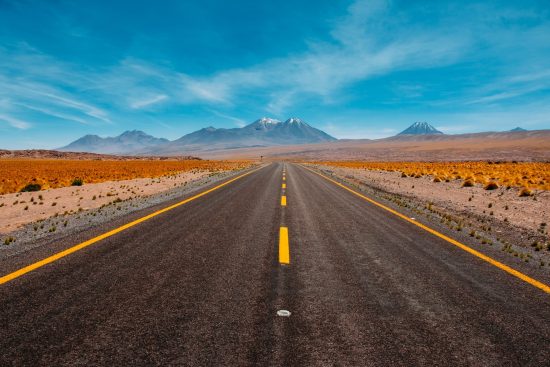
The story of American music is a rich tapestry woven with the threads of history, culture, and emotion. It’s a narrative that traces back to the very roots of the nation, reflecting the diverse voices that have shaped its identity. From the deep South where the blues sang the sorrows and joys of life, to the bustling cities where jazz found its rhythm, American music has always been more than just sound—it’s a reflection of the American experience. This heritage is a chronicle of innovation, as each generation has taken the baton and sprinted forward, infusing music with new stories and sounds. It’s about the universal language of melody and harmony that resonates with people from all walks of life. As we explore this vast and vibrant lineage, we’ll discover how the music of America has become an integral part of the nation’s heart and soul, playing out in a million different ways across this land of opportunity.
Roots of Blues
At the heart of America’s musical landscape, the blues stands as a towering figure. Born from the depths of African American hardships and resilience in the Deep South, this genre is the soil from which much of modern music has grown. The blues was more than just a style; it was a communal language that articulated the soul’s deepest feelings. Early blues musicians used nothing more than a soulful voice and the raw twang of a guitar to convey tales of love, loss, and life.
The simple structures and repetitive patterns of blues music made it relatable and easy to follow, allowing listeners to feel every aching emotion in the performer’s voice. With each bend of the guitar string, artists like B.B. King and Muddy Waters didn’t just play music; they shared stories that echoed the struggles and triumphs of an entire community. The influence of blues is undeniable, creating a foundation that would give rise to numerous other music genres, each carrying a piece of that original heartfelt expression.
Jazz Age Chronicles

Jazz is America’s music, a vibrant soundtrack that captured the nation’s pulse during the Roaring Twenties and beyond. This genre sprang from the mingling of blues, ragtime, and other musical forms, all converging in a spontaneous combustion of sound.
Jazz mirrored the frantic pace of the time, a period when America was finding its feet as a modern society. It was in the smoky speakeasies and the glamorous ballrooms that jazz musicians became the unofficial composers of the nation’s narrative.
The legends of jazz are many, and their contributions are monumental:
- Louis Armstrong’s trumpeting brilliance
- Duke Ellington’s orchestral masterpieces
- Ella Fitzgerald’s unparalleled vocal range
- Billie Holiday’s emotive and poignant performances
- Charlie Parker’s bebop innovations
These icons and many others crafted a genre that is both complex and accessible, defined by improvisation and the unique voice of each musician. Jazz invited listeners to feel a part of something spontaneous and alive, a musical conversation happening in real time. For a deep dive into the jazz universe, the Smithsonian Jazz collection offers a treasure trove of information, capturing the essence of this influential period in American music history.
Jazz was more than entertainment; it was a cultural statement, a bold declaration of creativity and freedom. As jazz continues to evolve, it reminds us that at its core, American music is about storytelling, innovation, and the spirit of adventure.
Rock & Roll Revolution
Rock & Roll hit the American music scene like a lightning bolt. In the 1950s, a generation hungry for its own sound found it in the wild, rebellious rhythms of rock music. It was more than just music; it was an attitude, a way of life that spoke to the youth. The beats were infectious, the melodies were catchy, and the lyrics captured the soaring spirit of freedom and rebellion. Imagine teenagers in poodle skirts and leather jackets, gathering around jukeboxes, their feet tapping uncontrollably to the revolutionary tunes of Elvis Presley, Chuck Berry, and Little Richard.
These artists were not just musicians; they were icons who helped shape a cultural movement. Rock & Roll was the soundtrack of sock hops and drive-in movies, a shared beat that brought people together. It challenged norms, broke down barriers, and set the stage for the cultural shifts that would follow. Rock music told stories of love, excitement, and adventure, wrapping them in a sound that was as bold and brash as the shiny chrome on a ’57 Chevy. It was, and still is, a symbol of youthful exuberance and the enduring desire to push against the status quo.
Hip-Hop Cultural Impact

Hip-hop burst onto the scene as a voice of urban America, its beats and rhymes echoing through the streets of New York City’s boroughs before sweeping across the nation. This wasn’t just a musical style; it was a cultural phenomenon that included:
- Rapping – delivering lyrics with rhythm and flow
- DJing – creating music using turntables and mixers
- Breakdancing – dancing with acrobatic moves
- Graffiti – using art to make a statement
These elements combined to create a powerful form of expression for those who felt unseen and unheard by mainstream society. Hip-hop was more than a trend; it was a movement, providing a platform for storytelling that shed light on struggles, dreams, and the reality of life in America’s inner cities.
To understand the profound influence of hip-hop, a visit to the National Museum of African American History & Culture offers insight into the genre’s historical significance and its role in shaping cultural dialogues.
From its gritty beginnings, hip-hop has grown into a global force, influencing fashion, language, and politics. It continues to evolve, pushing boundaries and challenging listeners to think critically about the world around them. Hip-hop isn’t just music to dance to; it’s a canvas on which generations of artists have painted the stories of their lives, making it an essential thread in the fabric of American culture.
Cross-Genre Influences
The American music scene has never been a closed circuit. It thrives on a vibrant exchange of ideas and sounds, absorbing influences from across the globe. This blend has given birth to entirely new music genres, a testament to the country’s melting pot ethos. Take for example the surge of interest in K-Pop, a genre originating from South Korea. Its catchy hooks and polished choreography have not only won over American audiences but also influenced American artists, introducing new beats and production styles into their work.
Similarly, Latin rhythms have spiced up the pop and hip-hop arenas, making salsa and reggaeton beats familiar to American ears. These cross-cultural exchanges enrich the American music landscape, offering fresh perspectives and inspiring artists to experiment and innovate. Music, in its most beautiful form, is a universal language that crosses borders and connects people, and America’s openness to this global conversation keeps its music scene vibrant and ever-evolving.
Echoes into the Future
As we look to the horizon, the beats of the past set the rhythm for tomorrow’s music. The legacy of American genres like blues, jazz, rock, and hip-hop continue to pulse through the heart of new creations. With each new artist that emerges, the story of American music stretches further, weaving in modern tales and technology. The soundtrack of America is ever-changing, but the foundational elements remain—raw emotion, innovation, and a reflection of the society from which it springs. This musical journey tells us where we’ve been and hints at where we’re going, ensuring that the beat, indeed, goes on.







